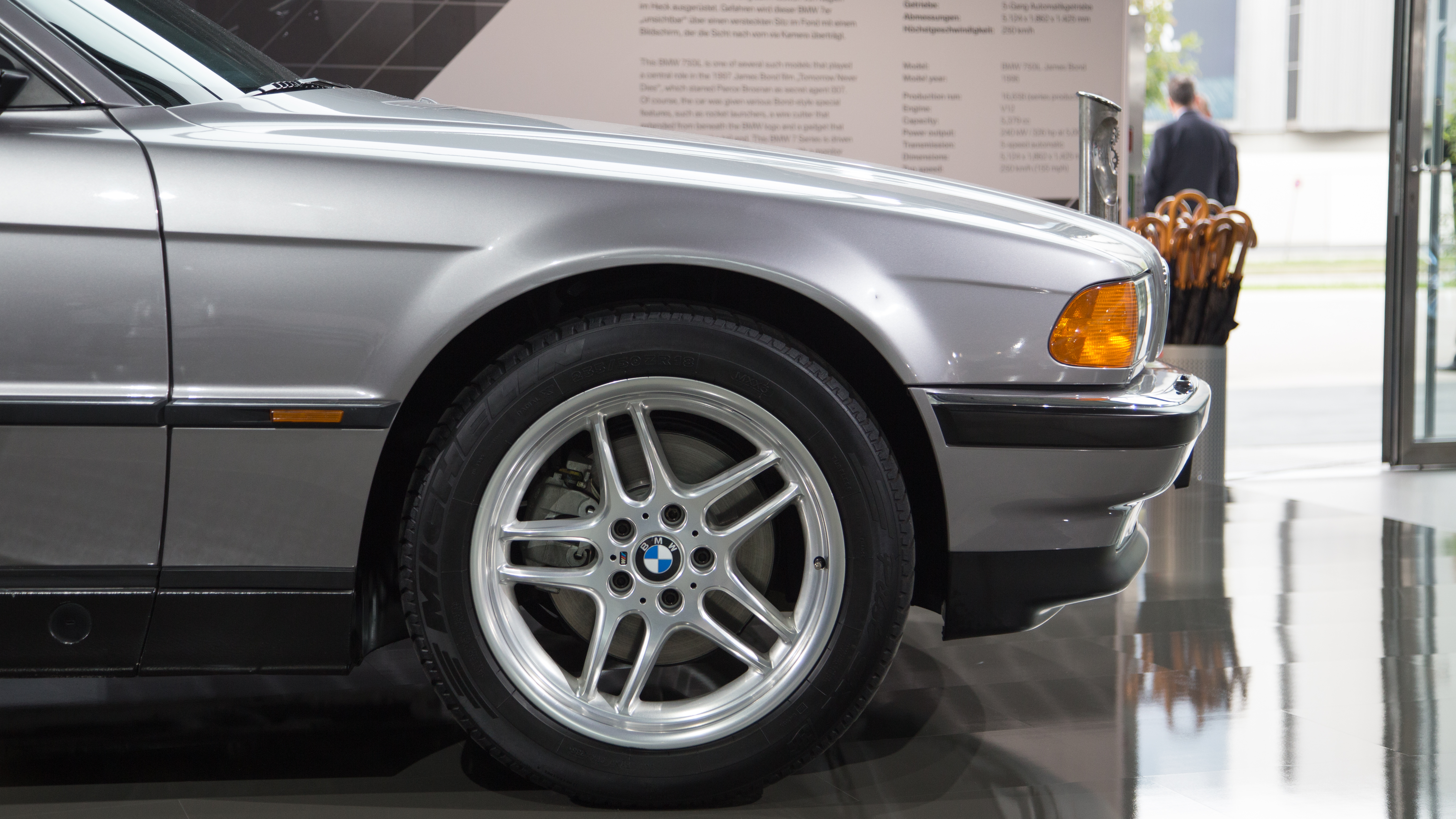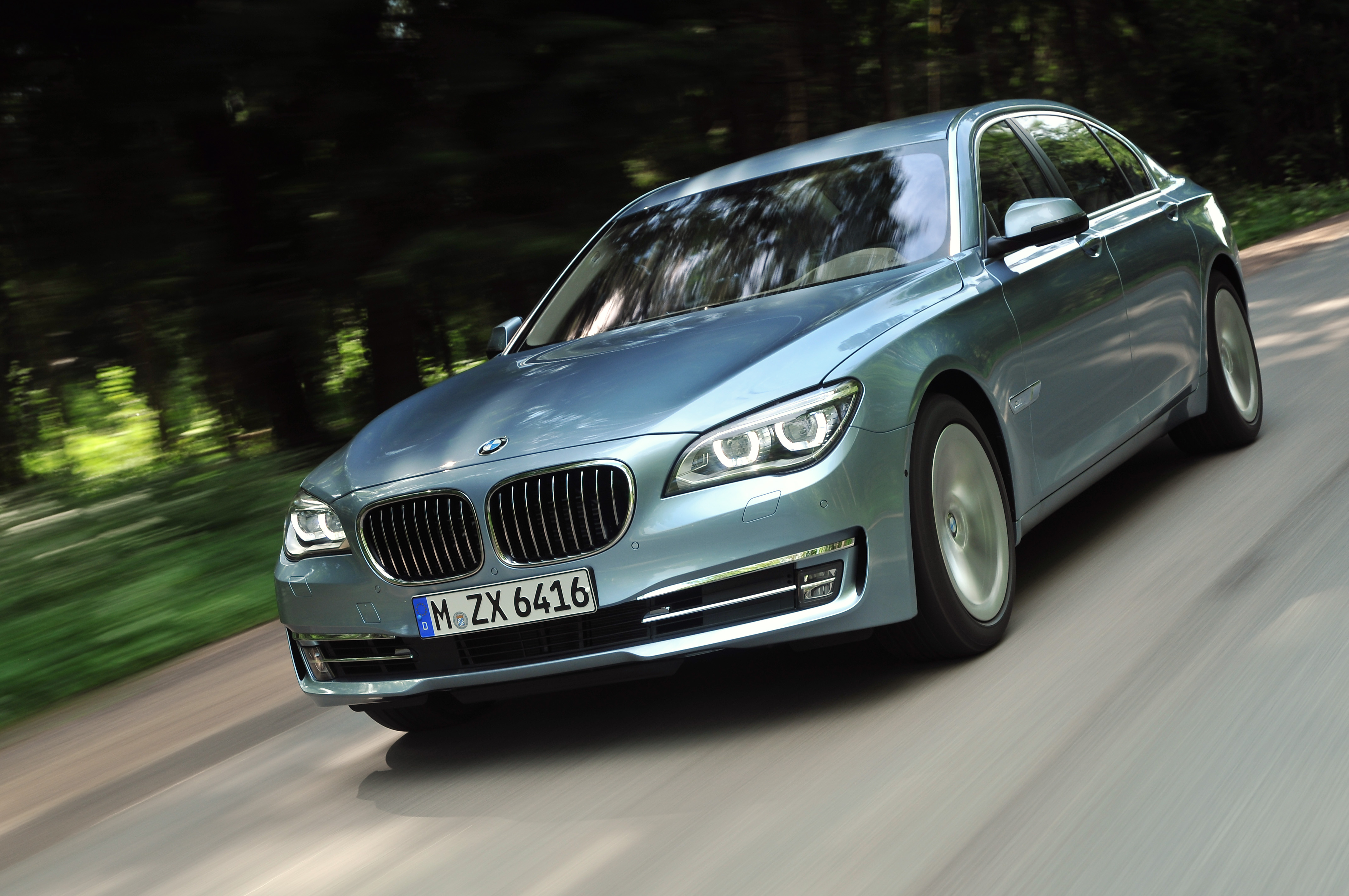Flagships like the BMW 7 Series have long heralded the arrival of revolutionary features that might one day be accessible in the average BMW. So while the design, features, and outstanding capability of the new 2016 BMW 7 Series are all on the cutting edge today, witnessing the announcement of this model is really a glimpse into the future of technology not just in BMW models, but across the entire automotive industry.

And this reality has been true for nearly 40 years. The inaugural 7-series (the E23) first emerged in 1977, bringing with features like anti-lock brakes, a full array of onboard computers, and the introduction of the “check panel” that would become a staple of driver-engine communication in BMWs for the next twenty years—and all of these features were made all the more impressive when you consider that the some early E23s could easily have shared showroom space with the last of the E9 “New Class” coupes, which were still available in carbureted form until the end of their model run in 1975.

Subsequent 7s were no different; whether subdued like the E32, revolutionary like the Bangle-designed E65, or timelessly elegant like the spectacular E38, the technology that filled the flagship's clean Bavarian designs was without fail years ahead of what one would find in the equivalent car of the era.

But since we love trivia, here are some of the highlights. The E32 (built 1986-1995) was available with an onboard telephone and fax (!) machine and double-glazed windows (at a time when airtightness was still a work-in-progress on even a 6-series, this represented a dramatic improvement in sound deadening). But other features, like Xenon headlights, traction control, and electronically-dampened suspension, again exemplify how safety and driving technology pioneered by the 7 eventually does trickle down into more mundane models—but only when given two decades to catch up.

Photo Credit: BMWUSA News
The E38 (built 1994-2001) that followed lives on as one of the most timeless 7-series designs in its history, and in addition to the V12 and V8 powertrains first demonstrated in the E32, this handsomely-equipped 7 was the first generation to have available navigation, and also the first production model to feature head-level airbags for the front passenger seat; the concept behind the “Head Protection System” is of course standard in almost every vehicle sold today.

The E38 also holds the distinction of having been driven by James Bond in Tomorrow Never Dies, where Pierce Brosnan's character operated a 7-series (pictured above) in a parking garage car chase from the rear seat using just a cell phone. While that scene may have been fanciful and futuristic at the time (and the actual car operated by a stunt driver sitting low in the rear seat), we are actually much closer to that reality today—who in 1997 would have thought that the E38's descendents might one day operate themselves from a touchscreen, computerized key fob?

Photo Credit: BMWUSA News
The E65 (2001-2008) and its new design brought in further updates, including the advanced iDrive infotainment system that only recently started to become standard on economy cars of today. The E65 also brought active suspension features (including active anti-roll bars), and introduced the BMW model range to HID headlights and push-button starting. But perhaps one of the the most significant features was the E65’s radar-guided cruise control, which is still in the process of filtering down to other models across the automotive spectrum—but we saw it in the 7 almost 15 years ago.

Photo Credit: BMWUSA News
The subsequent F01 (2008-2015) built upon the innovation of the E65, but with the addition of cameras and displays designed to improve situational awareness during driving and parking, providing overhead views, side views, speed limit detection, night vision, and rear view to complete the F01’s sphere of awareness. This generation also brought xDrive to the 7-series lineup—an option that is here to stay.

And now, in 2016, the BMW community is embarking on a new generation of 7-series, one—as anyone who was at the launch in Munich can attest—practically overflowing with innovative technology that feels natural and intuitive to use.

There are really too many neat features to name here; in the new G12, gesture and voice control work flawlessly, and digital instruments provide clear instruction to the driver. The car can also provide WiFi and wireless charging of phones and other compatible devices, and active kidneys help keep all the powertrains (two turbocharged gasoline power plants and a hybrid in the United States) cool under load. There’s also the much-tauted self-parking feature, where the car will maneuver itself into a garage or parking space sans driver when given the command from the incredible touchscreen key. And building the framework of the entire platform is BMW’s “Carbon Core” chassis—a mix of carbon fiber, aluminum, and steel that provides a lighter and stronger base for the new model.

But we can be confident that one day, like so many 7-series technologies that preceded the G12’s, some of these technologies will trickle down to even the most normal of vehicles to provide a stronger and more efficient platform—and allow the 7's engineers to innovate even more.
So which of the new car's features are you most excited to see in the 3-series of 2026, or the economy car of 2031? And perhaps more dramatically, what will the 7-series look like in another forty years? Maybe the best response to the latter is not to guess—the 7-series, like the automotive industry it predicts—will change in ways that we can predict no better than the BMW enthusiasts of the late 1970s when the model first debuted. But as we go along for the (very luxurious, very capable, and very technologically advanced) ride, we can count on the fact that the 7-series will remain, in its perpetually cutting-edge way, our portal to the future of the automobile. —David Rose








